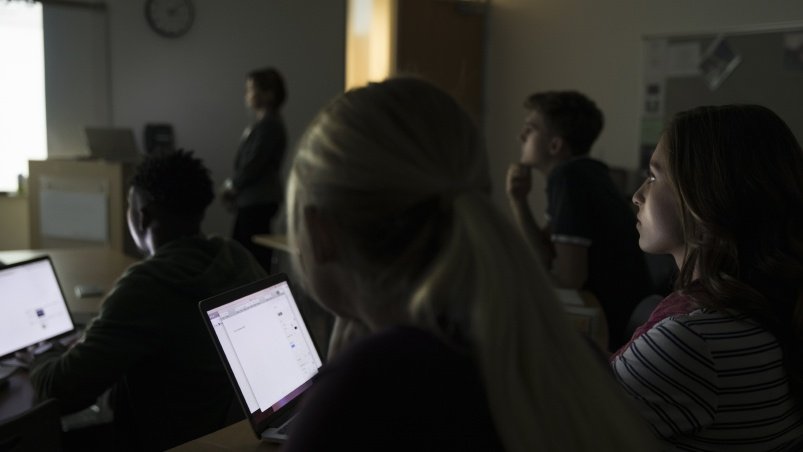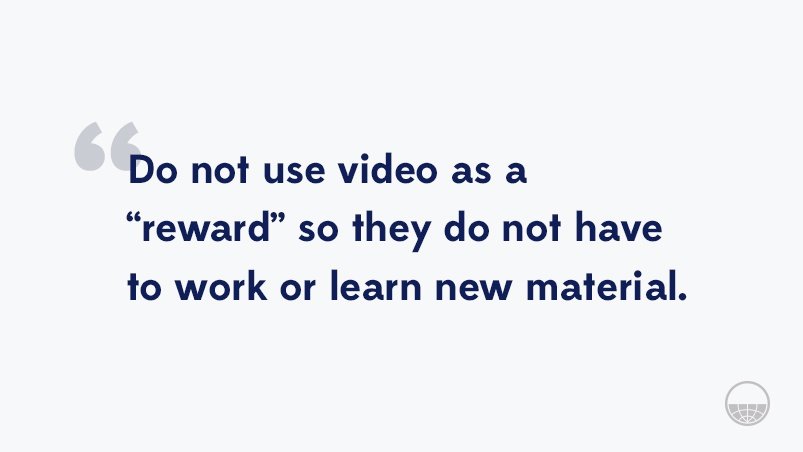
Film Day! When I was in grade school and high school, “film day” was always great.
We didn’t see that many films, so coming into the classroom and seeing that 16mm film projector was always exciting. And, it generally meant time off from classwork and homework.
I started teaching around the time that the first commercial VCRs (that’s a videocassette recorder) became available. Imagine being able to show an entire episode of Roots to students! Also, I knew if I showed video, I didn’t have to lecture or give an assignment.
However, I began to notice something else. When I showed video, student engagement began to drop off. This may have been for several reasons: students had already seen the content at home, I picked less than interesting videos, or, as more and more students had VCRs, and later DVD and Blu-Ray players in their home, they saw my use of video technology as an unreasonable intrusion into something they saw as entertainment, not educational. Students would put their heads down on their desks, work on other homework, or generally not pay attention.
Still, there are strategies that teachers can use to help make more effective use of video in the classroom. Let’s explore some ideas that might help.
1. Consider your subject, standards, and audience
Obviously, you’ll want to pick media that fits what you are teaching. You also will want to find video that meets the standards you want to address. (Active Classroom and PBS Learning Media do a great job of this.) Avoid videos with “talking heads” (people just talking) that tend to bore students.
2. Preview, preview, preview
It’s important for the teacher to know in advance WHAT is in the video they want to show students. Imagine my embarrassment (and concern) many years ago when I decided to show my U.S. History students an episode from the old HBO series Yesteryear, this one featuring the year 1933. I’d recorded this from home but I didn’t preview it. At the conclusion of the episode, students were able to see the famous burlesque dancer Sally Rand do her “bubble dance” without wearing a costume. Needless to say, I probably became very popular with most of the male students in the class, but it could have been a difficult time for this young teacher if a parent had complained to school officials. It’s always a good idea to watch the content first!

3. Consider how much time to allot
Most of us teach in a traditional K-12 classroom setting with a limited amount of time each day. Therefore, it’s difficult, if not impossible, to show an entire Hollywood film unless it spans over several days. Can you spare that much time? With DVD and Blu-Ray technology, it’s easier for me to index clips on a disc I want to show.
Also, there are various resources that provide short videos and video clips that are very effective. For example, I recently used a six-minute video on FDR’s “Hundred Days” from Active Classroom. I also used the two-question activity that accompanied the video. Many online sites mentioned in this post feature short clips as well.
Subscribe to the blog to get more articles like this sent to your inbox each week!
Read more posts from Michael Hutchison:
- 8 Steps to Transition to a Digital Curriculum for Social Studies
- Moving to a Digital Curriculum: the Good, the Bad, and the Ugly
- 7 Tips for Tackling Controversial Topics in Social Studies
4. Find good content
While it may be daunting for teachers to collect their own video archive, there are online sites that can help. As I mentioned, Active Classroom has a selection of hundreds of videos over many topics. PBS Learning Media has a large collection of film clips connected to lesson plans for PBS content, including various Ken Burns films. Most of the videos range five to ten minutes in length. C-SPAN Classroom also has a large video selection, with a tool that allows the teacher to “clip” videos to fit the teacher’s needs and time frame. (All three of these resources can align content to state and Common Core standards.) Free video sites such as YouTube also have a great deal of educational content.
Although not free, a fair amount of classroom-usable video is available on various streaming services, including Netflix, Hulu, and Amazon. For example, I use several episodes of the PBS series, American Experience that are available on these sites, since I have subscriptions to all three. I’m able to have students view these videos through my LCD projector. If needed, especially in the case of the for-fee streaming video sources, the teacher might be able to just direct students to view the content.

5. Hold students accountable
Do not use video as a “reward” so they do not have to work or learn new material. It’s always best to have some sort of activity or assessment piece for students to complete. For example, I usually have a fill-in-the-blank activity or something similar for students to do while they watch the video. Obviously, I want this to be a learning experience for the students. This definitely requires the teacher to preview the material prior to showing it.
Again, there are also online resources that can help you develop activities. Most American Experience film websites, for example, includes the transcript for the film. As mentioned earlier, there are many lesson plans on the PBS Learning Media website that accompany the video clips. C-SPAN Classroom content also includes lesson plans, discussion questions, and other activities. All Active Classroom video activities include review questions, and videos are searchable by the standard you wish to hit.
6. Add it to the quiz
You might also wish to include items from video content on the next quiz or test you give as well. This gives even more “legitimacy” to using video with students.
While today’s students may not see a 16mm in their classroom in the 21st Century, using video can be an important part of classroom instruction, if the teacher properly prepares and uses it. Give these suggestions a try!
Have other suggestions about more effective use of video? Feel free to post below in the comment section.
Get a 30-day free trial of Active Classroom and explore hundreds of curated videos and digital activities for social studies classrooms
Michael Hutchison is social studies department chair at Lincoln High School in Vincennes, Indiana. A 39-year teaching veteran, he has written multiple titles for Social Studies School Service as well as lessons for several Ken Burns films, including The War, The Roosevelts: An Intimate History, and The Vietnam War. In 2014, the Indiana Historical Society named him Caleb Mills History Teacher of the Year.
